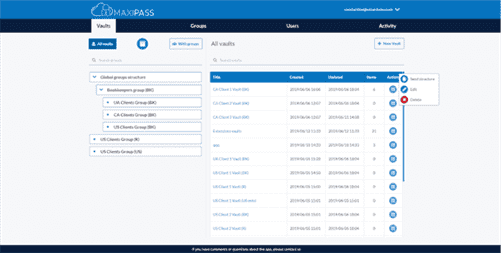The presentation layer is our final layer that presents the data to the front-end user on every HTTP request. First, you need to add the Models folder that will be used to create the database entities. In the Models folder, we will create the following database entities. For the Domain layer, we need to add the library project to our application. And finally, we saw how our Presentation layer is implemented as a separate project by decoupling the controllers from the main Web application.

Not even the HttpClient, it’s used an abstraction INetworkClient. By clicking “Post Your Answer”, you agree to our terms of service and acknowledge that you have read and understand our privacy policy and code of conduct. Onion Architecture uses the concept of layers, but they are different from 3-tier and n-tier architecture layers. Let’s see what each of these layers represents and should contain. For the triploid onion, but this name has also been applied to the Egyptian onion.
AWS Lambda does not natively support TypeScript. In this article, you are going to learn how to create a Typescript Lambda.
Onion Architecture provides a powerful approach to software development, emphasizing modularity, maintainability, and testability. By following the key principles and organizing the codebase into distinct layers, developers can create robust applications that are easier to understand, modify, and extend over time. The onion structure example folder structure presented in this article serves as a starting point for implementing Onion Architecture, with the flexibility to adapt it to the specific needs of each project. Throughout my developer career, every rails-style application (.net MVC, spring MVC, whatever) has a folder/project called “Utils”.
- Business rules that belong to the domain model, domain services and application services should be tested via Unit Testing.
- Then, run the following commands to add migrations and to generate/update the database.
- Onion architecture implements this concept and dramatically increases code quality, reduces complexity and enables evolutionary enterprise systems.
- Furthermore, we propose a generative algorithm producing synthetic scale-free networks with onion structure, circumventing the optimization procedure of Schneider et al.
- We’ve shown you how to implement the Domain layer, Service layer, and Infrastructure layer.
- In this report, we observed the formation process of onion structures under shear flow.
Modifying the database modeling should not affect the software’s business rules. You should be able to easily test your domain logic.Then, we should start thinking about separating different concerns into different units of code. At the center part of the Onion Architecture, the domain layer exists; this layer represents the business and behavior objects. The idea is to have all of your domain objects at this core.
Magic Johnson Responds to Cancellation of Lakers Series ‘Winning Time’: “I Never Watched”
In the Application Layer, Create a New Folder called Features. This will have all the logic related to each Feature / Entity. Under this folder, add a new one and name it ProductFeatures. Here we will just Add Mediator to the service collection. We will implement the Mediator pattern later in this tutorial. In N Layer Architecture, the Database is usually the Core of the Entire Application, i.e It is the only layer that doesn’t have to depend on anything else.

Besides the domain objects, you also could have domain interfaces. Domain objects are also flat as they should be, without any heavy code or dependencies. Onion architecture is also applicable to microservices when viewing each microservice in isolation. Each microservice has its own model, its own use cases and defines its own external interfaces for retrieving or modifying the data.
JSON Based Localization in ASP.NET Core With Caching – Super Easy Guide
Thus, the swagger will open up by default every time you run the application. We will start off by creating a Blank Solution on Visual Studio. PS, I use Visual Studio 2019 Comunity which is completely FREE.

Usually it’s not a good idea to try to use a single repository for more than one aggregate, because maybe you will end up having a Generic Repository. Usually, each domain aggregate has its own repository (if it should be persisted), so you could have a repository for Accounts, another for Customers, and so on. An Application Service is a piece of code which implements a use case. The Application Layer is the second most inner layer of the architecture.
Implementation of Onion Architecture
The aim of this study is to find a best phenomenological function I(t) by using curve fitting method for the formation dynamics of onion structure under shear flow. Furthermore we will briefly discuss about physical meaning of fitting parameters. In this Letter, we investigate the formation process of the onion structure toward the stationary state under shear flow. Once onion structure is formed in lamellar structure under shear flow, onion structures are of micrometric size. Therefore the two dimensional light scattering measurement can detect their time evolution of the size. It is found that the best fitting function, that is, phenomenological function I(t), in order to describe a position of the Bragg peak qmax as function of time.
I have already written a detailed article on MediatR and CQRS patterns in ASP.NET Core 3.1 WebApi Project. You can follow that article and add the Required Commands and Handlers to the Application Layer. We will have to register Swager within the application service container. Navigate to ../Startup.cs and add these lines to the ConfigureServices method. To keep things simple but demonstrate the architecture to the fullest, we will build an ASP.NET Core Web API that is quite scalable.
Solution structure
The architecture does not depend on the data layer as in classic multi-tier architectures, but on the actual domain models. Application services also referred to as “Use Cases”, are services responsible for just orchestrating steps for requests and should not have any business logic. Application Services interact with other services to fulfil the client’s request. Let’s consider the use case to create an order with a list of items. We first need to calculate the price including tax computation/discounts, etc., save order items and send order confirmation notification to the customer. The application services can be only invoked by Infrastructure services.
Onion architecture implements this concept and dramatically increases code quality, reduces complexity and enables evolutionary enterprise systems. The presentation layer is the default Asp.net core web API project Now we need to add the project references of all the layers as we did before. In the case of the API presentation layer that presents us the object data from the database using the HTTP request in the form of JSON Object.
What is the motivation for splitting the Service layer?
But in the case of front-end applications, we present the data using the UI by consuming the APIS. Now we need to add a new project to our solution that will be the service layer. We will follow the same process for adding the library project in our application, but here we need some extra work after adding the project we need to add the reference of the Repository Layer. Next, we looked at the Infrastructure layer, where the implementations of the repository interfaces are placed, as well as the EF database context.